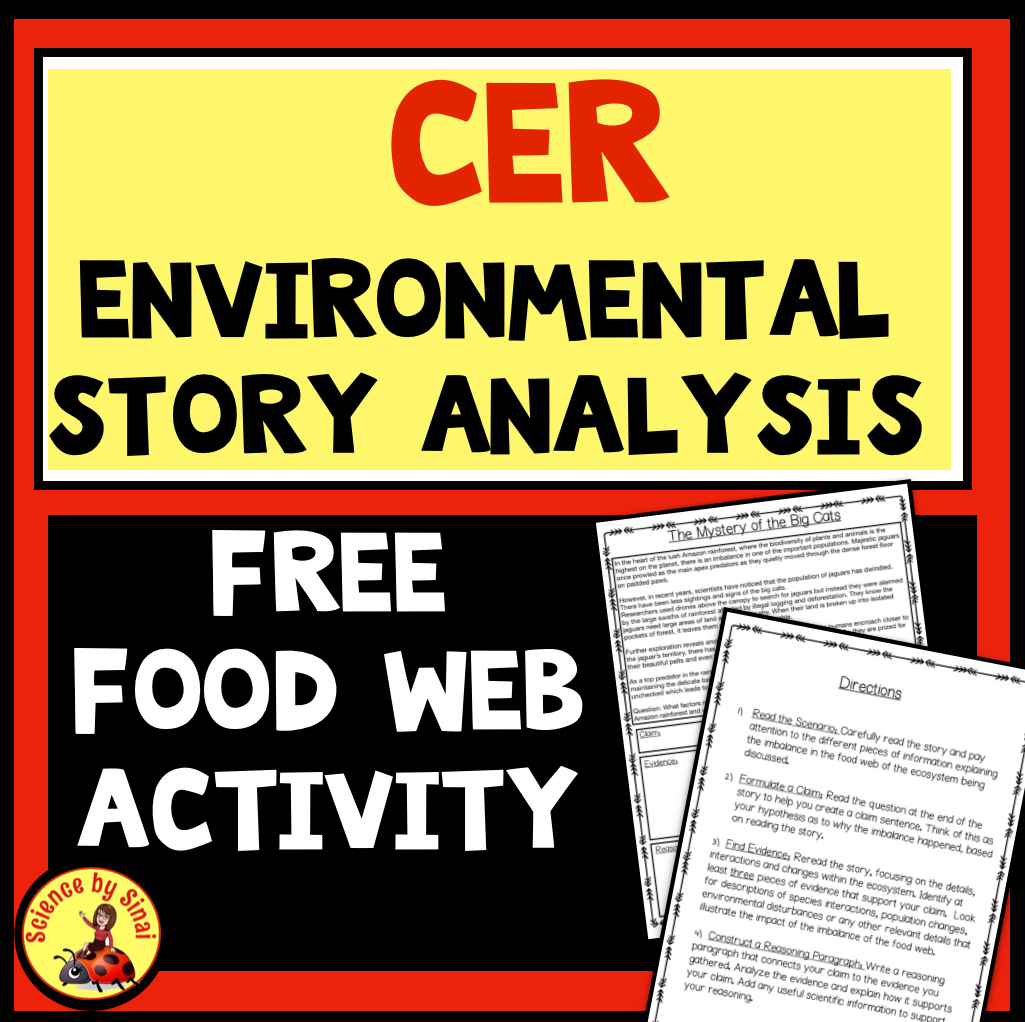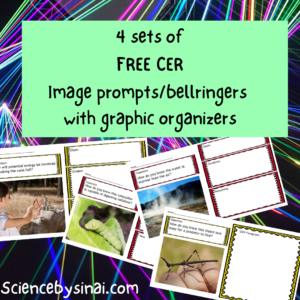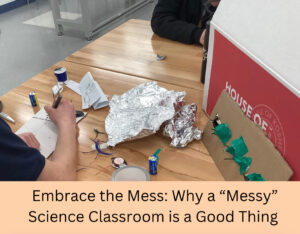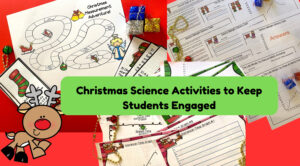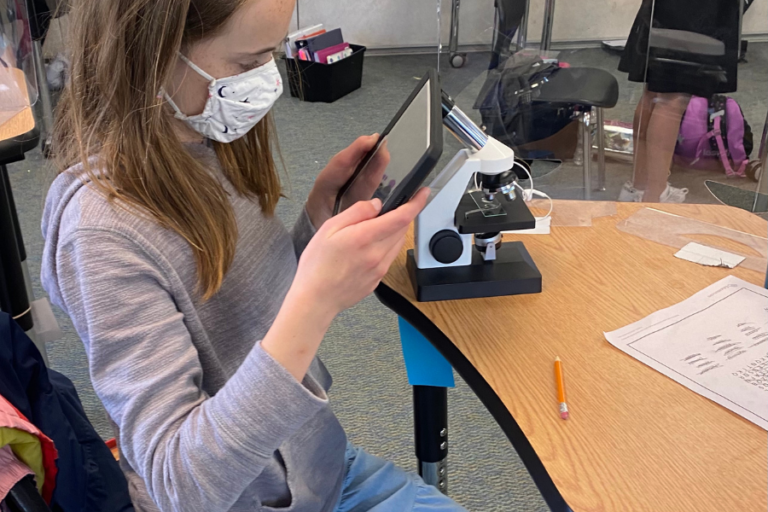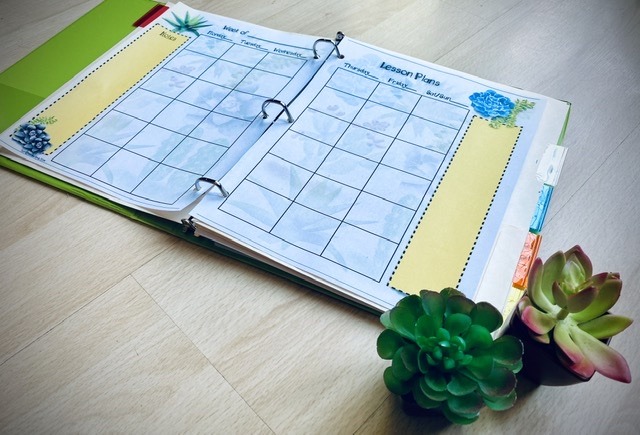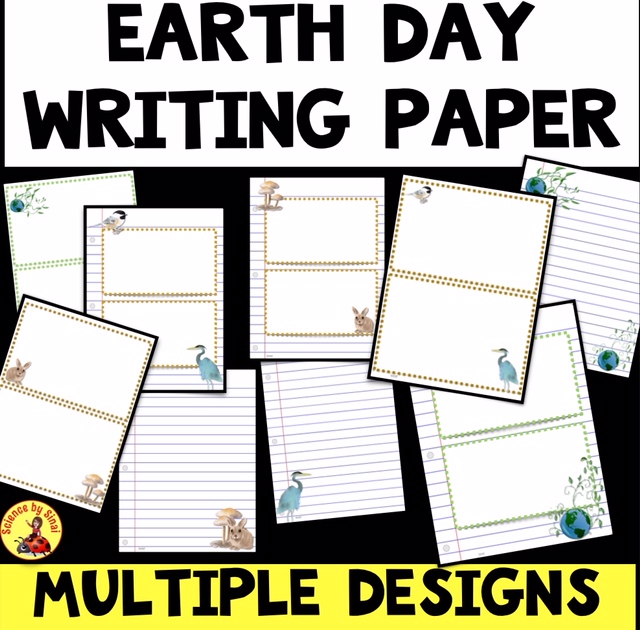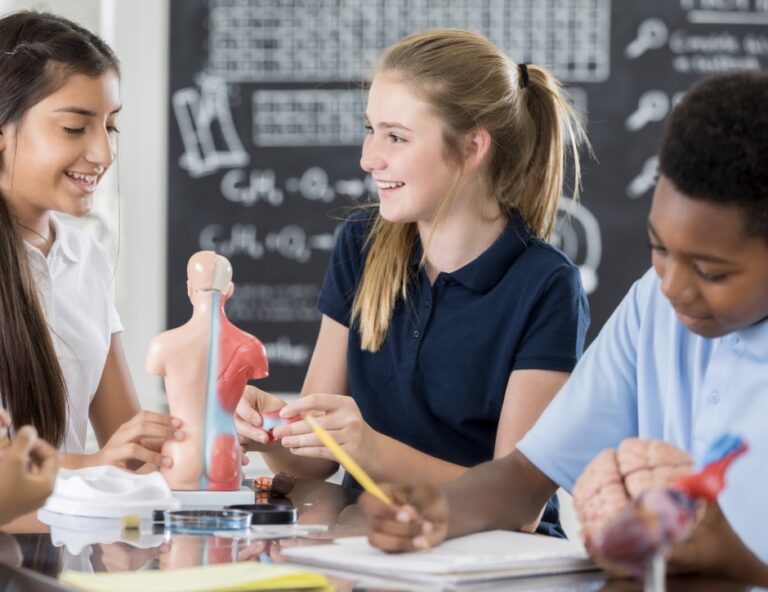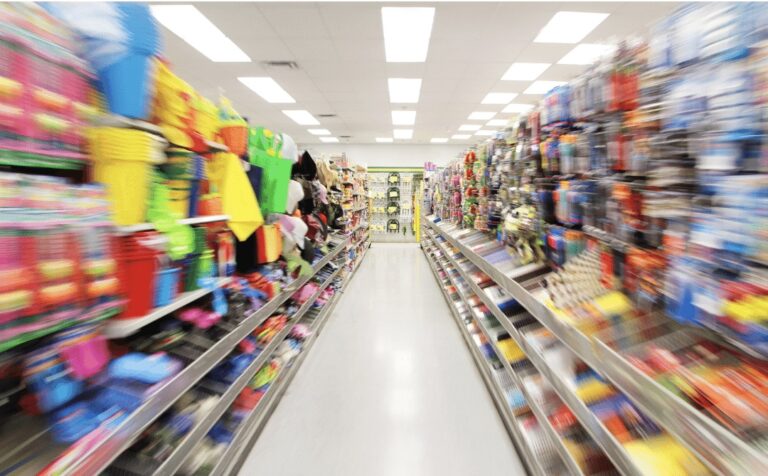Boost Your Student’s Critical Thinking with CER in Science Class
CER (Claim, Evidence, Reasoning) is a critical thinking framework that encourages students to analyze evidence and draw conclusions that are thorough and appropriate.
I have pushed my students for years to think “out of the box“ while trying to pull data together. However, they have always struggled with the concept of “why?”. They would ramble on about the data but often not look at it deeply enough. I was getting beautiful lab reports with weak conclusion sections.
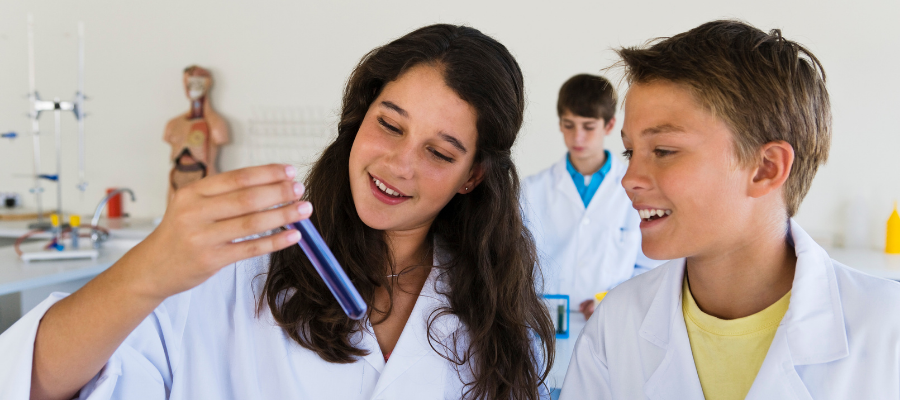
Boost Your Student’s Critical Thinking with CER in Science Class
July 2023
Using CER to Improve Writing in Science
A few summers ago I purchased a book called “Writing in Middle School Science,” by Scott Phillips. It really made me realize that the CER process was doable!
I had dabbled with it before but never really “named it” in my classroom. It was time that I got serious with the student’s writing! The premise behind the book was that students use only five or six sentences to lay out the claim, evidence and reasoning.
When I first introduced this process, my middle school students really liked the fact that they were doing minimum writing. However, after using this approach, I was amazed at the QUALITY that was going into those few sentences.
Early on, introducing critical thinking CER, students struggled with listing evidence without trying to do any reasoning yet.
By using lots of examples, they started to understand that they must look at ONLY what they observe. Many teachers struggle with the reasoning part of CER. Scott Phillips discussed using the prompt “In science we know that…therefore…” This simple approach was a game changer with a lightbulb effect in my classroom. Students had to dig into the previous knowledge for a scientific principle or research it depending on their evidence.
Of course, this didn’t come quickly, so I needed to model, model, model.
Introducing CER with Inference TV Commercials
Not wanting to start the school year with heavy writing, I decided to lighten the atmosphere with a few inference TV commercials that are found on YouTube. I did find, however, that my seventh and eighth graders were better able to separate the “silly science” from the “real science” than my younger sixth graders.
I think most teachers who start CER using commercials, use the old favorite Audi commercial. The young girl states “I have evidence that my father is an alien”. It certainly lends itself to a very good discussion with well stated “evidence” for students to analyze.
Again, this was easier for my slightly older students as I asked them to take the approach of supporting the young girl’s evidence from HER point of view. I then had them refute the evidence with scientific principles.
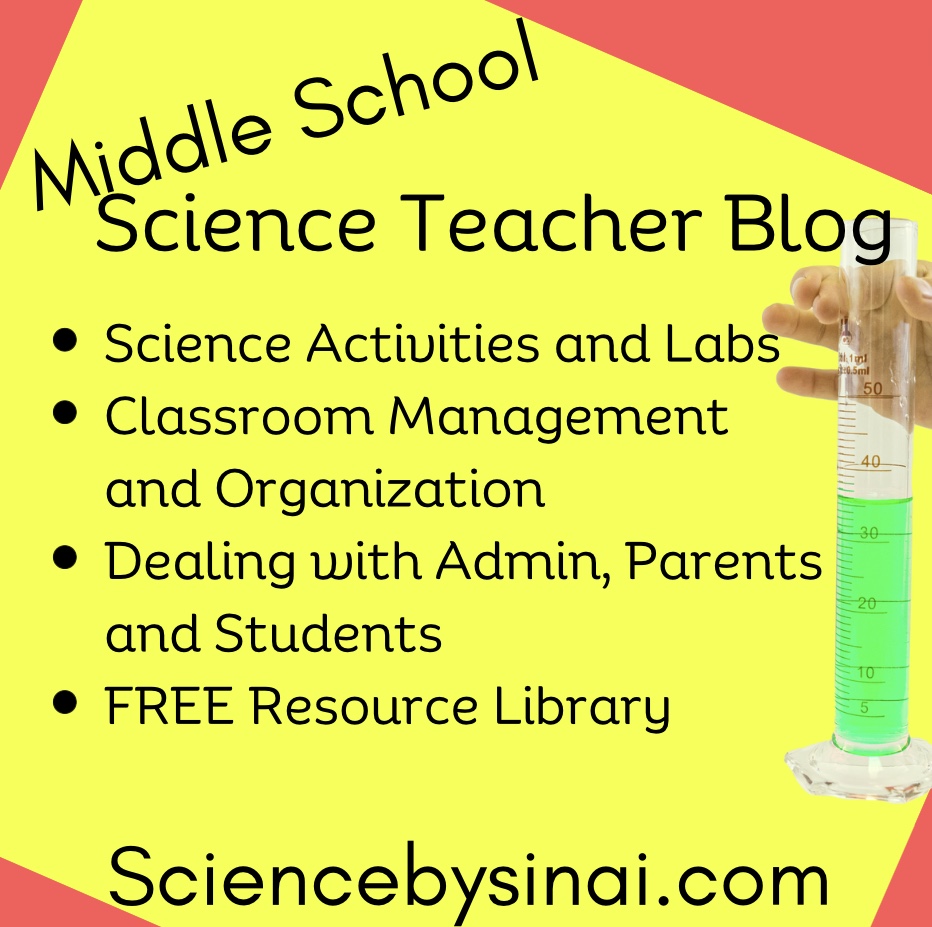
More Favorite Inference Commercials
By far my favorite CER inference TV commercial is the Doritos “missing cat”. Students watching it for the first time do exactly what the commercial wants us to do.
This video is set up to have viewers jump to the conclusion that the dog has harmed the cat. In the dog’s guilt, he bribes his owner with bags of Doritos to keep him quiet. Students listed the evidence and we had very good discussions about “circumstantial evidence” in a court of law. I prompted them by asking them if they actually ever saw the cat. Could the dog just be digging and feel guilty about destroying the garden?
We discussed how evidence can sometimes be linked together to form a theory by filling in the missing parts with “imagination” or inferring. This is NOT the way we want to be doing science. This led into an analysis of what kind of evidence they could gather if they had the opportunity to find out the truth about this video. They came up with answers such as “we could go dig in the garden” or we could “find out if the cat is still missing”.
Other useful commercials may be The Nolan’s Cheddar Cheese Mouse Trap, Gatorade Be Like Mike, Tabasco Mosquito Super Bowl Spot and Skechers Go Run Cheetah ad, Ice Cream and Golf Volkswagen
Templates for CER for Their Digital Science Notebooks
All of my students have digital science notebooks using templates I created. While we were watching the commercial videos, they used the colorful CER templates that I sent to them. I made a wide assortment of borders and layouts to appeal to different tastes. Students told me that they like the CER approach because it all fits onto one page. I love the critical thinking they are producing. True example of quality versus quantity!

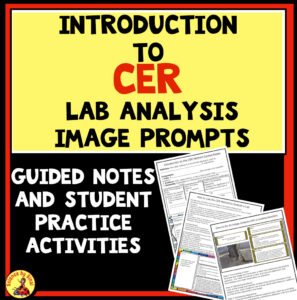
Critical Thinking CER Images for Deeper Discussions
After they did very well with the above activities, we moved onto the more difficult image prompts. I searched for a long time for images that were multifaceted.
After doing this activity with several classes, it was fascinating to find deeper levels of the photographs that I hadn’t noticed! For example, I have an image of apples and leaves on the ground and the apples are in different stages of decomposition. When I chose the photograph I wanted them to look at the signs of decomposition on the apples such as mold, shriveling, color change, worm holes, etc. My eighth graders noticed that the leaves in the photograph were also in different stages of decomposition, based on their colors and dryness. They also determined that some of the leaves were on top of the apples and some were under the apples.
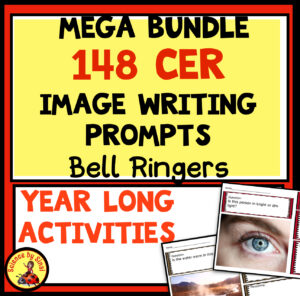
Using CER Prompts to Create Labs
Too often when we are looking for labs to do in the classroom they tend to be very cookie-cutter with a known result. These are useful at times to support a concept.
However, I love throwing a question out to the students to wrestle with coming up with their own methodology for finding an answer. I start with simple data collecting questions such as “What color M&Ms do people choose to eat first?”. Although it sounds silly, they can set up a legitimate testing experiment with good parameters to gather evidence.
Questions can be posed such as “which location in this classroom is best suited to germinate bean seeds?”, “from which direction does the wind blow across the schoolyard most often?”or “will balls of different masses roll different distances after they go down the same ramp?”.
Students put together a claim, design an experiment and gather at least three evidence sentences. They then use the prompts discussed earlier, “in science we know that… therefore…”, to pull everything together.
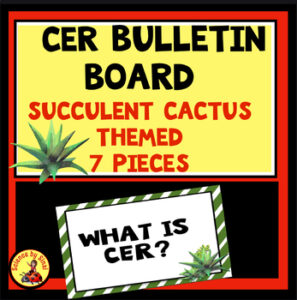
Using CER to Analyze Data Charts and Graphs
There are lots of sources online for finding data for the students to analyze and draw conclusions. You can give students a ready-made graph and have them interpret the data, or you can give them the raw data and have them graph and analyze it. It is quite easy to find lists of data such as the heart rates of animals, breathing rates , boiling points of liquids, top speed of animals, or the lifespans of different organisms. You can even find the data of the profits of Starbucks stores over time or the amount of Starbucks stores per state!
Having them analyzing line graphs, bar graphs and paragraphs is an important skill.
Using CER to Analyze Sort Cards
Many of the sorting sets and task cards that you already have may lend themselves well to a CER activity. Here are a few of my image prompts/sort card sets that I now use with CER templates.
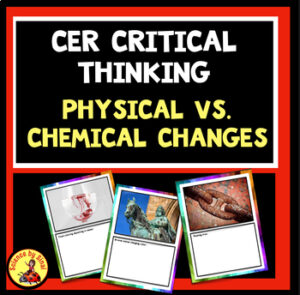
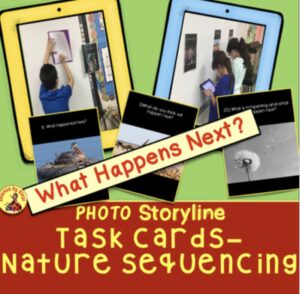

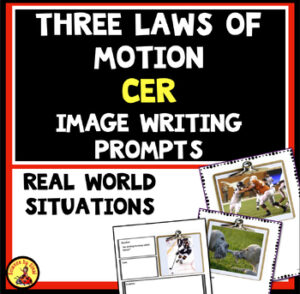
Using critical thinking with CER in my classroom has literally changed my students’ outlook in a very short time. I use the method as a stand alone activity or as the conclusion section of a standard lab report. My students seem much more confident with their new understanding of how to pull evidence together to write a good reasoning section.
Looking for science resources? Please visit my store on Teachers Pay Teachers called Science by Sinai for hundreds of activities.
